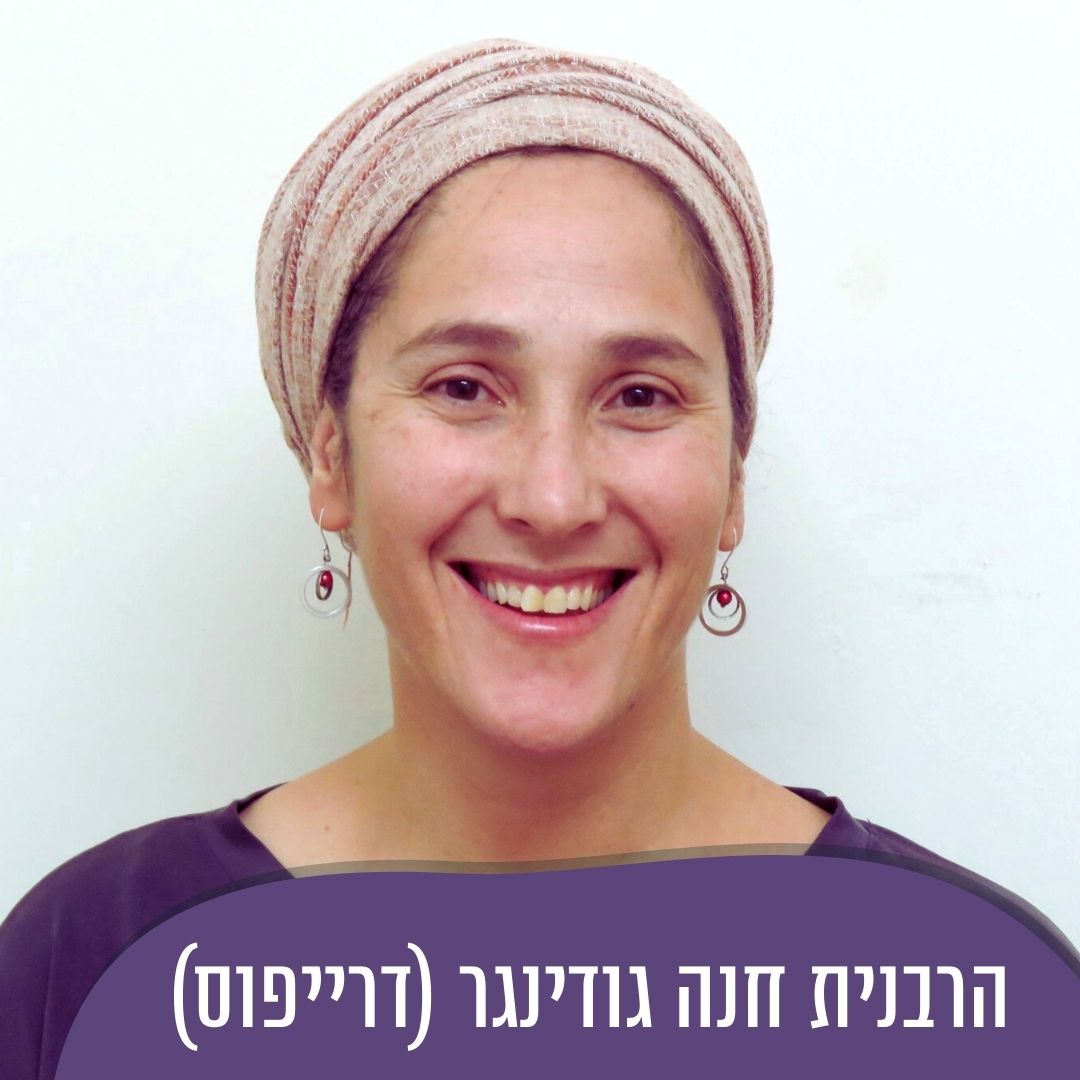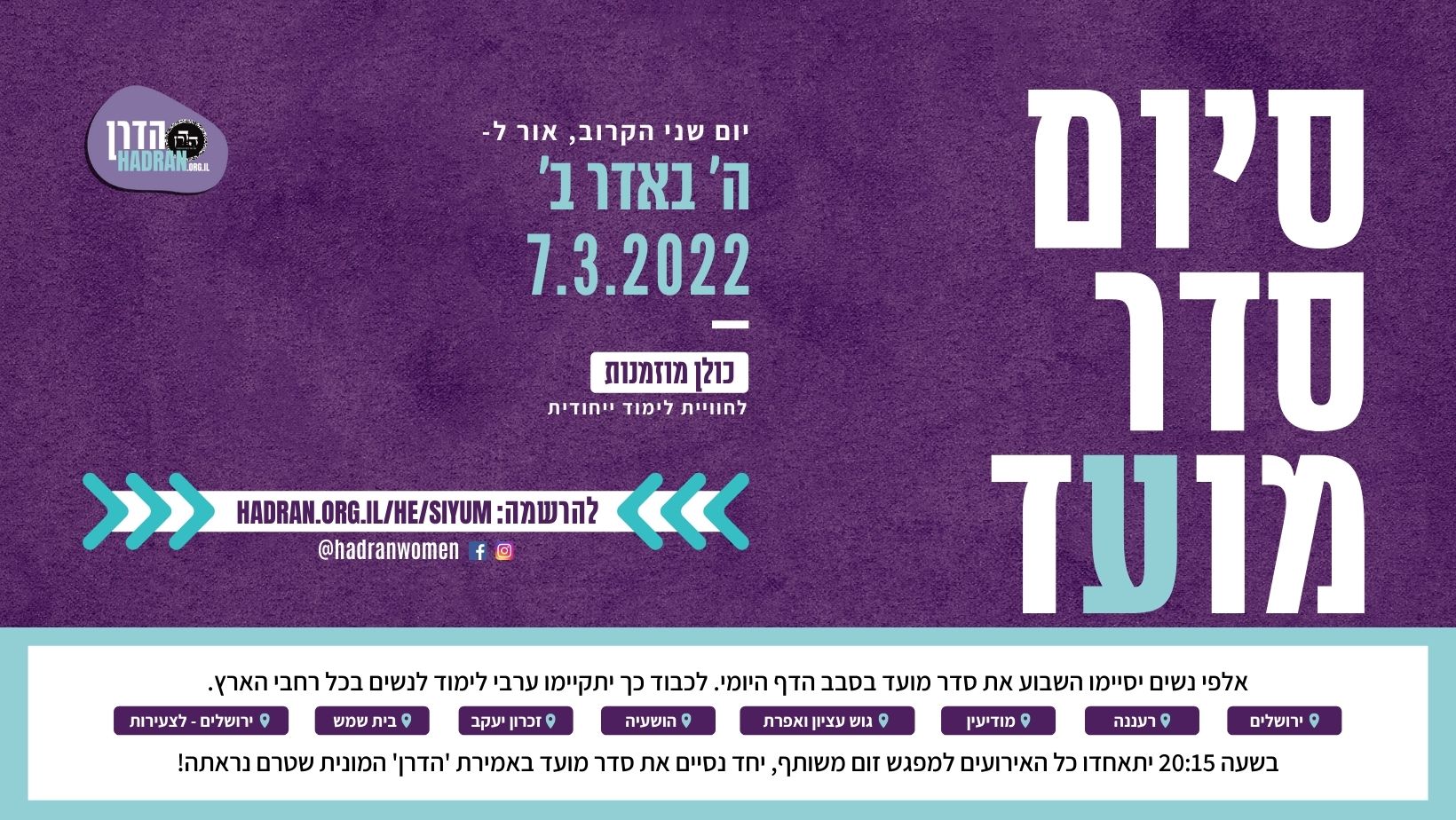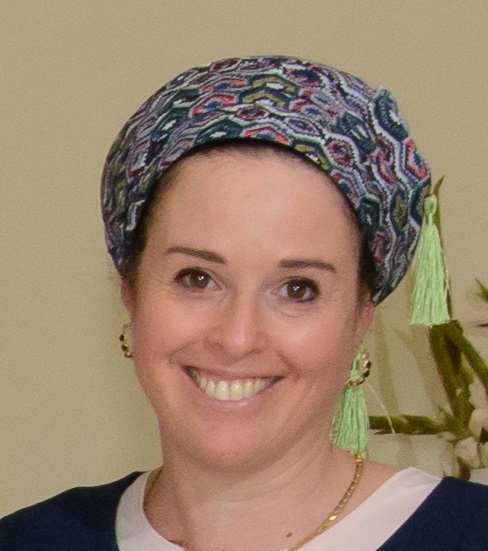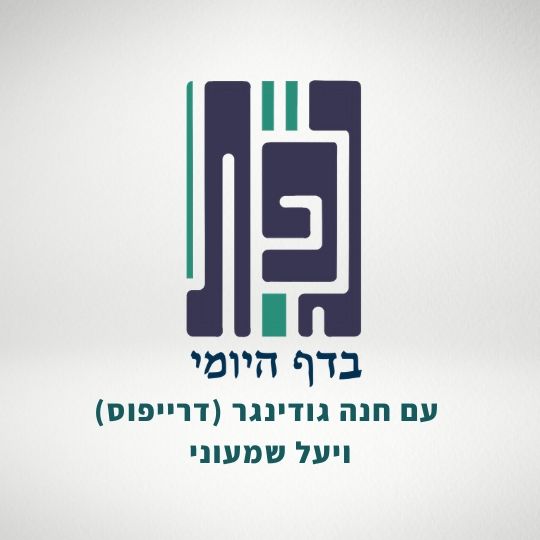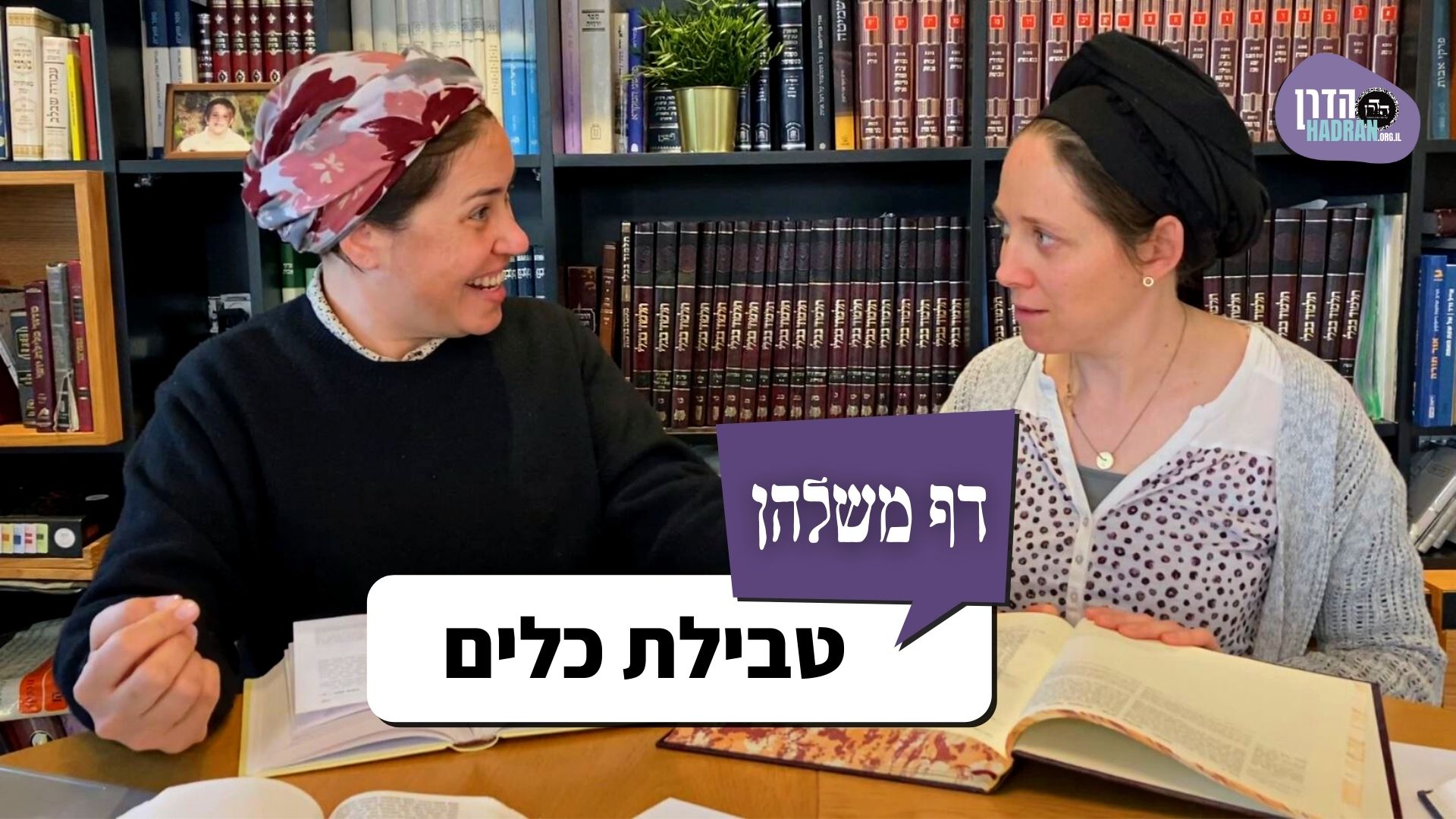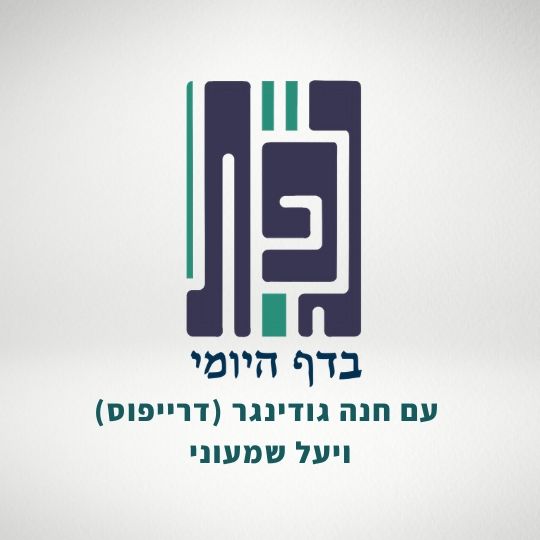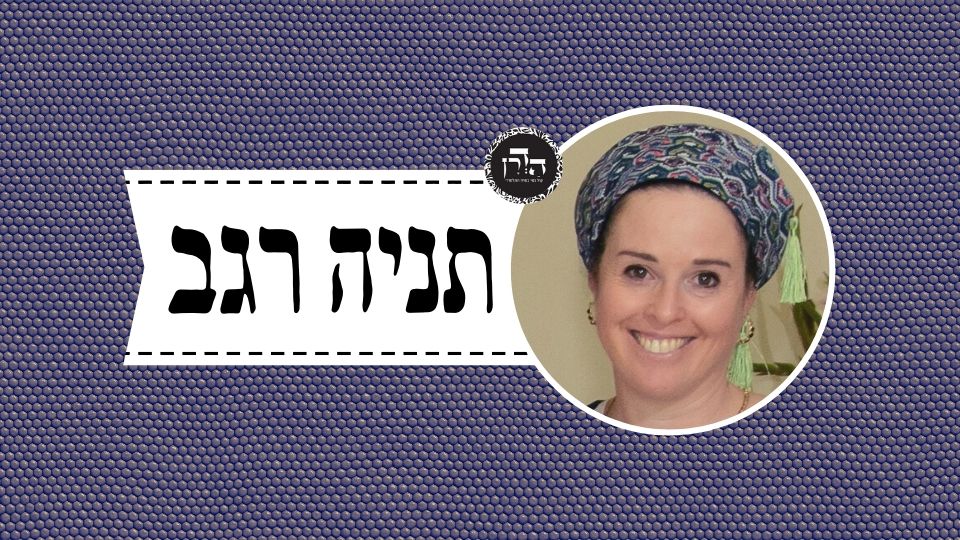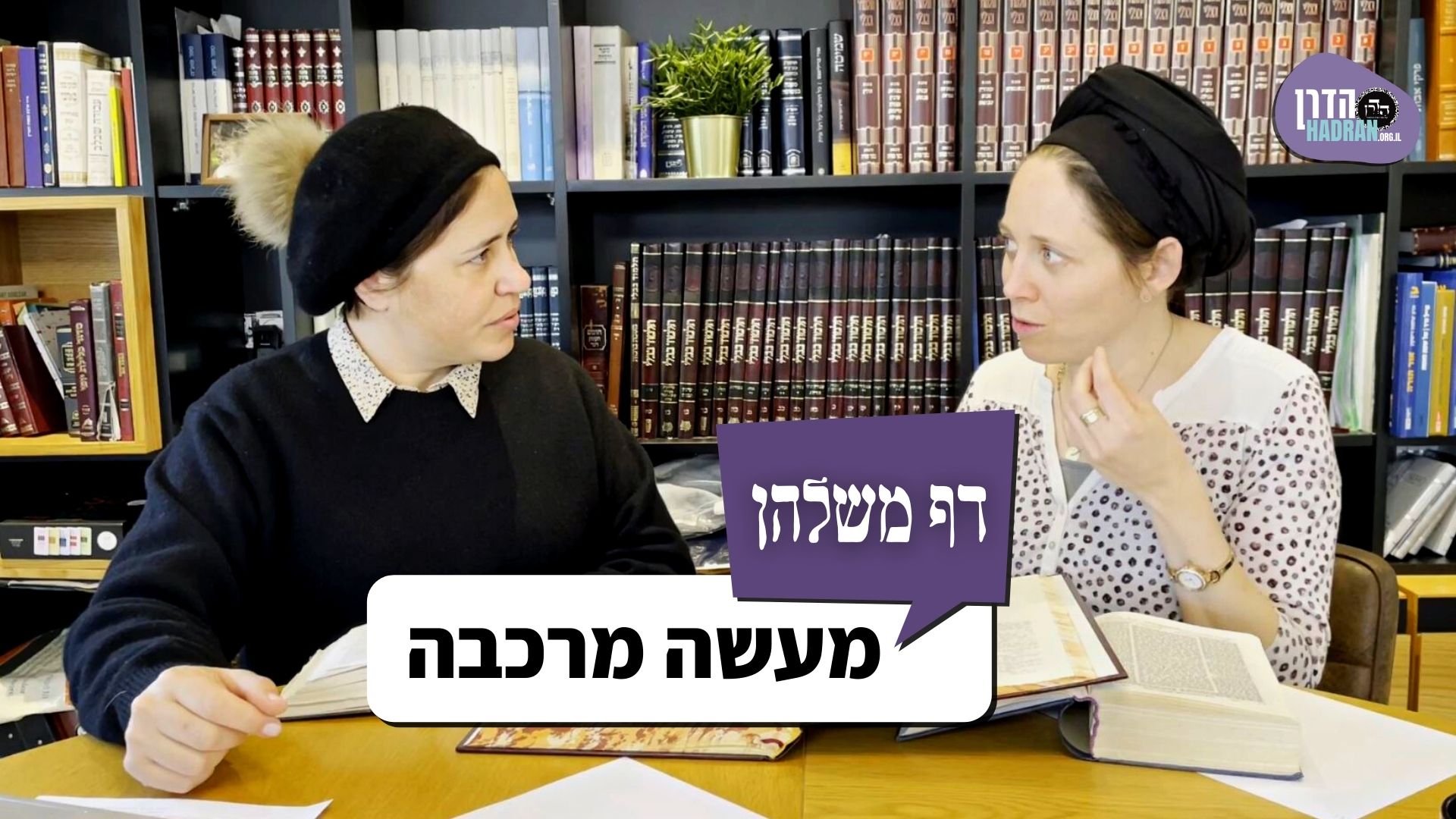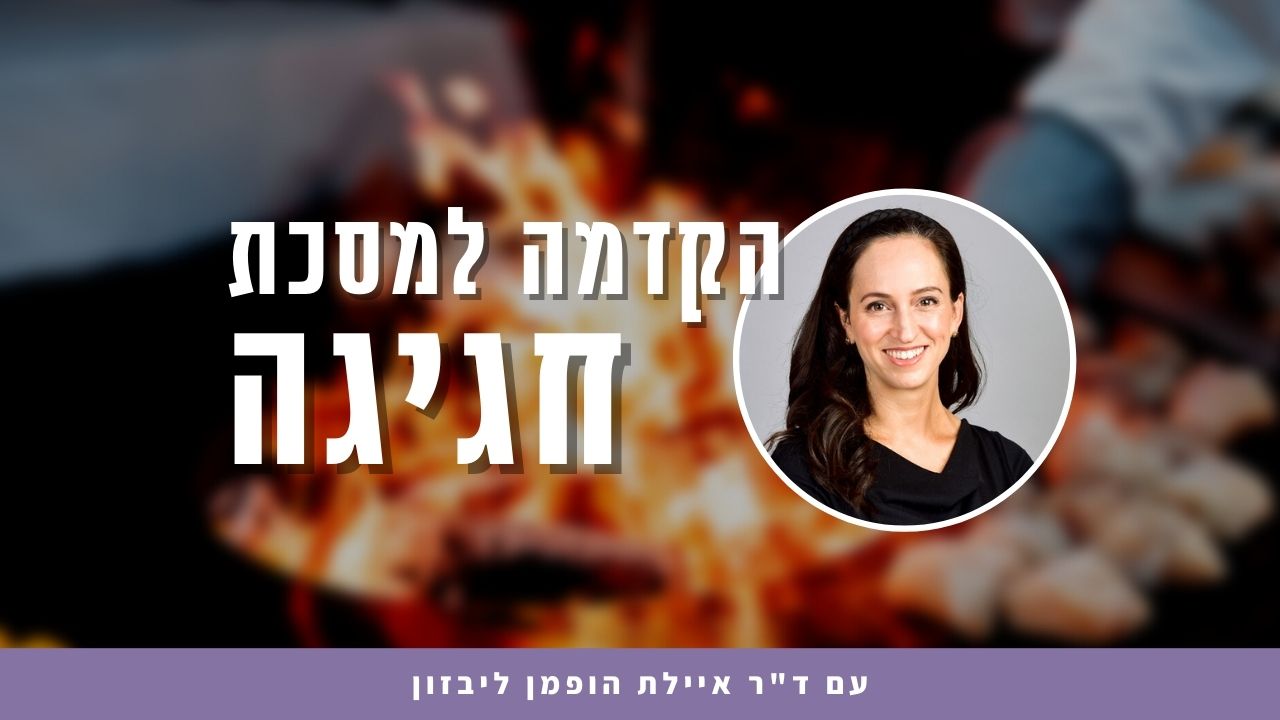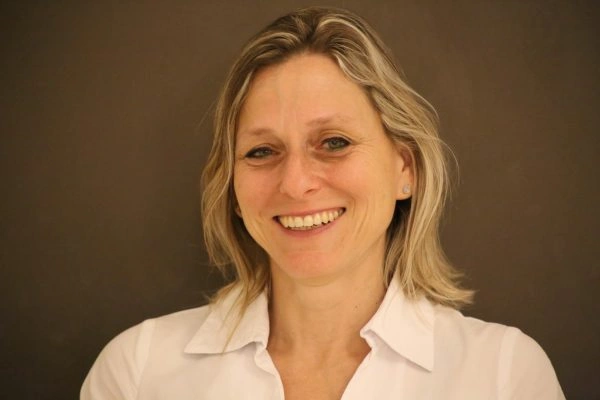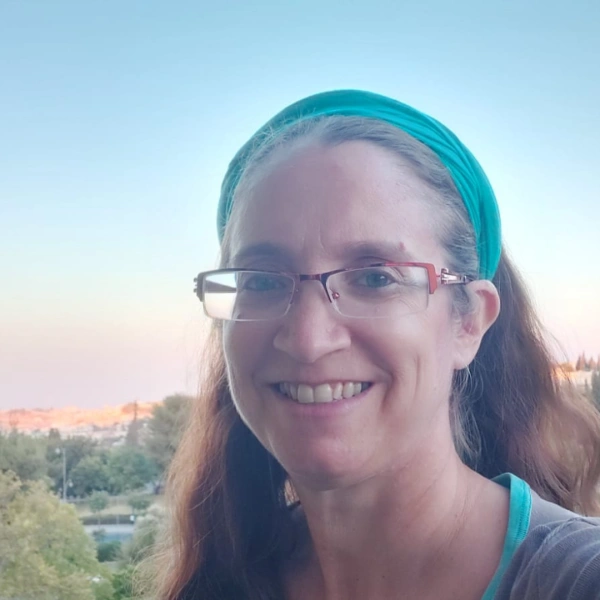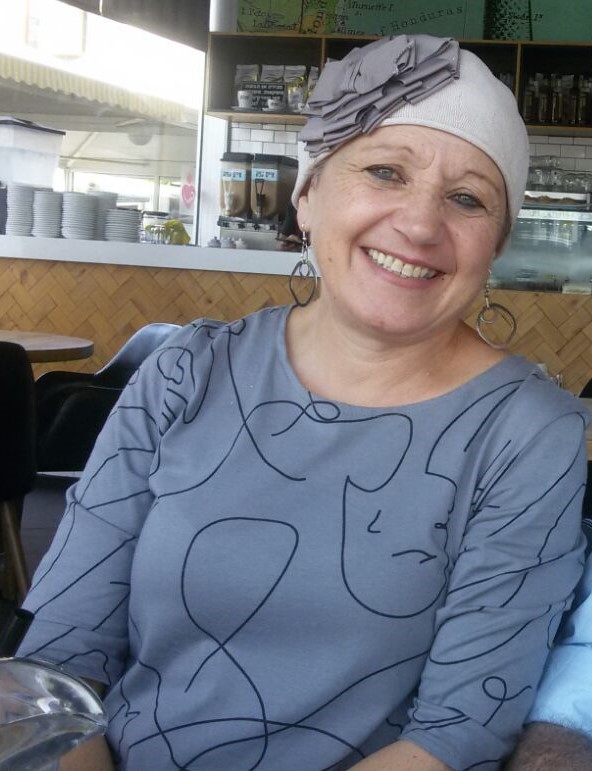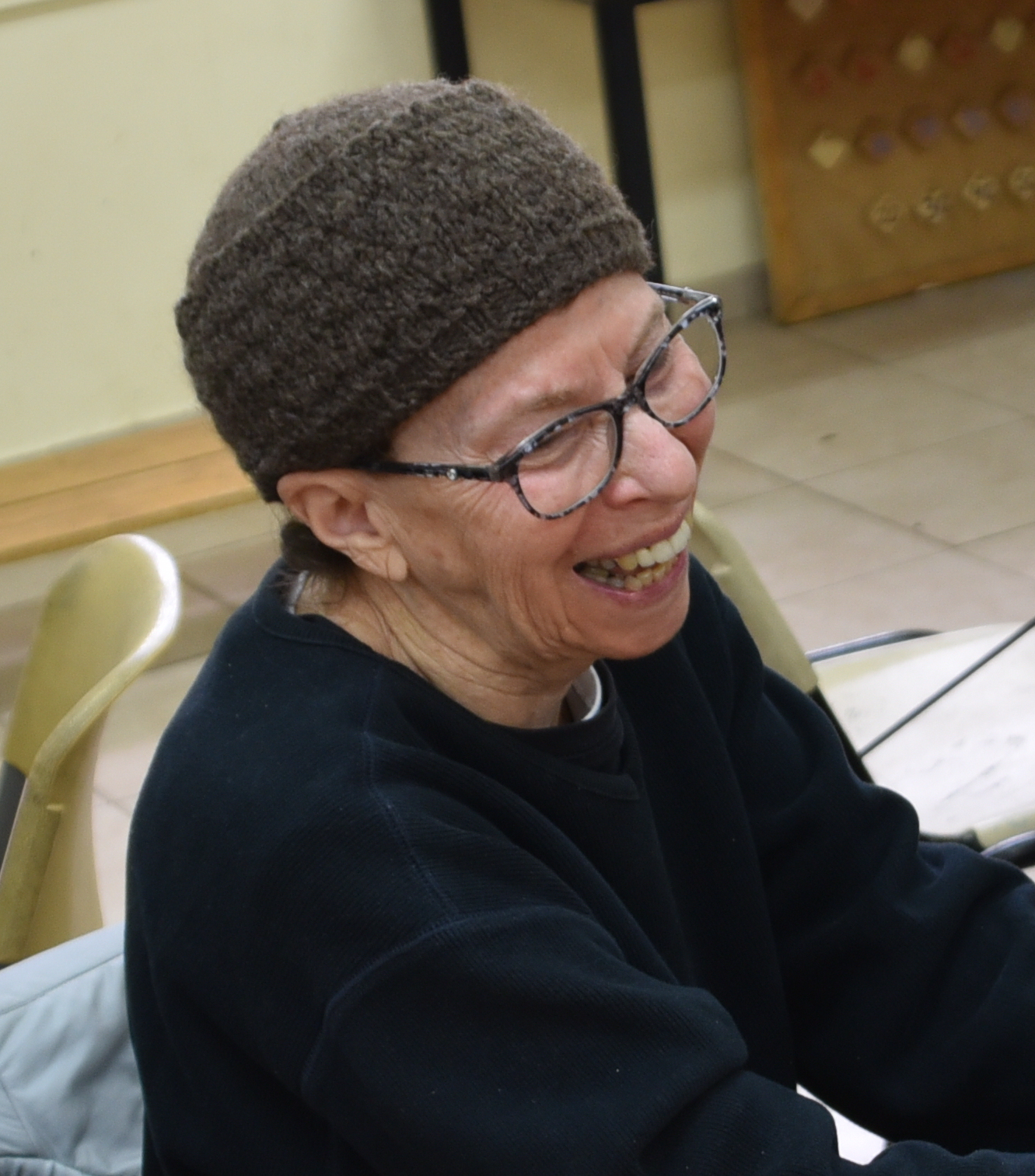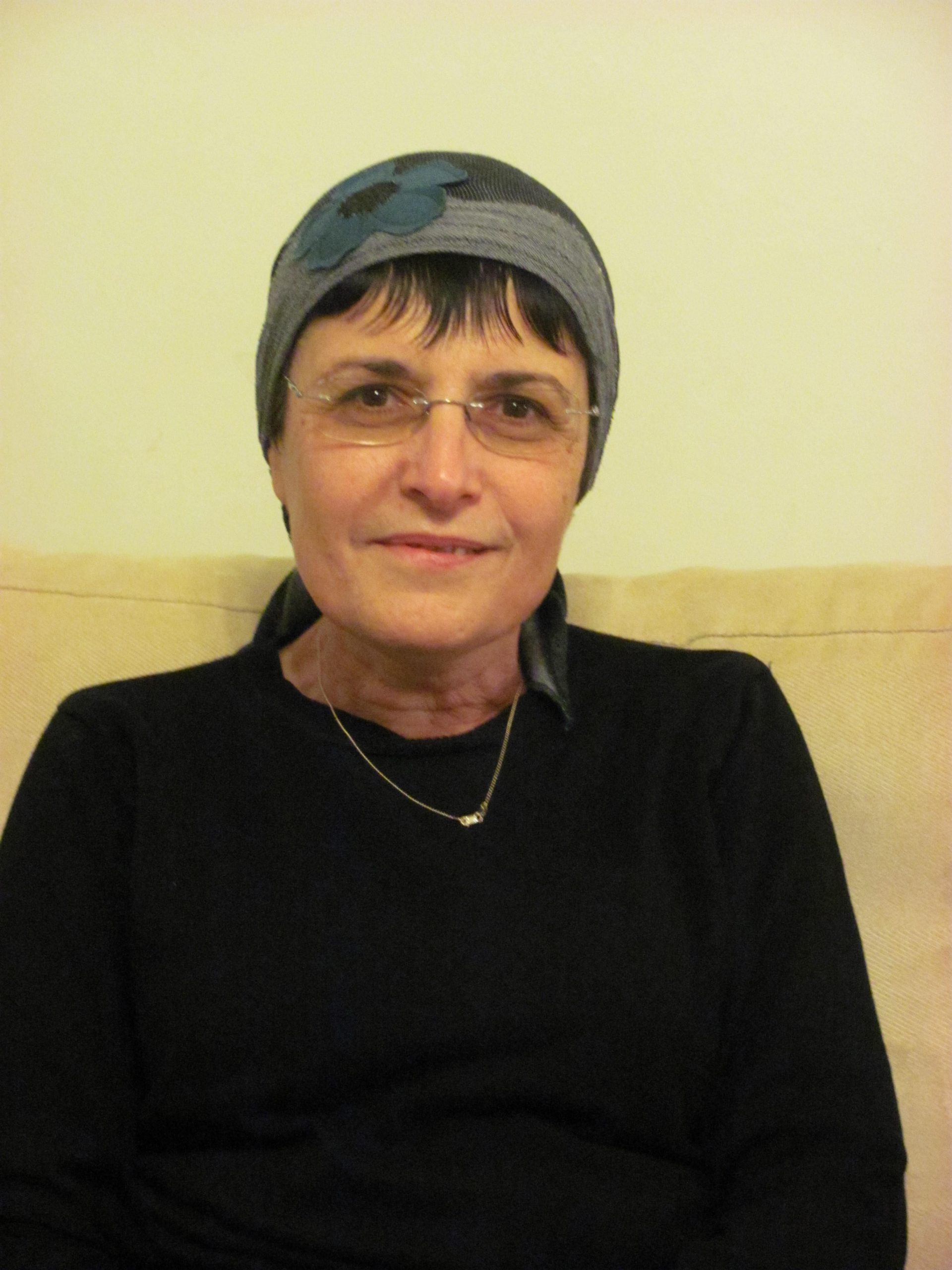חגיגה ו
עַד הָכָא, מַאן אַתְיֵיהּ?
Who brought him to here, all the way to Jerusalem? If the father could bring his child to Jerusalem, why can’t he bring him to the Temple Mount?
אֲמַר לֵיהּ אַבָּיֵי: עַד הָכָא דְּמִיחַיְּיבָא אִימֵּיהּ בְּשִׂמְחָה — אַיְיתִיתֵיהּ אִימֵּיהּ. מִכָּאן וְאֵילָךְ, אִם יָכוֹל לַעֲלוֹת וְלֶאֱחוֹז בְּיָדוֹ שֶׁל אָבִיו מִירוּשָׁלַיִם לְהַר הַבַּיִת — חַיָּיב, וְאִי לָא — פָּטוּר.
Abaye said to him: With regard to the way to here, as his mother is also obligated in rejoicing on the Festival, his mother brought him when she herself ascended to the capital. From this point forward, if he is able to ascend and hold his father’s hand from Jerusalem to the Temple Mount, he is obligated, and if not, he is exempt.
הֵשִׁיב רַבִּי תַּחַת בֵּית הִלֵּל: לְדִבְרֵי בֵּית שַׁמַּאי, ״וְחַנָּה לֹא עָלָתָה כִּי אָמְרָה לְאִישָׁהּ עַד יִגָּמֵל הַנַּעַר וַהֲבִיאוֹתִיו״ — וְהָא שְׁמוּאֵל, דְּיָכוֹל לִרְכּוֹב עַל כְּתֵיפוֹ שֶׁל אָבִיו הֲוָה.
It is taught in a baraita that Rabbi Yehuda HaNasi responded in place of Beit Hillel, that according to the statement of Beit Shammai that a child who is unable to ride on his father’s shoulders is not obligated in the mitzva of appearance, they must explain a verse that deals with Hanna, Samuel’s mother: “But Hanna did not ascend, for she said to her husband: Until the child is weaned, when I will bring him” (I Samuel 1:22). But Samuel was able to ride on his father’s shoulders. The age of weaning is twenty-four months, before which Samuel was already old enough to ride on his father’s shoulders, and yet he was not ready to ascend to the Tabernacle. This shows that only a child who is able to walk on his own is obligated in the mitzva of appearance.
אֲמַר לֵיהּ אֲבוּהּ: וּלְטַעְמָיךְ, תִּיקְשֵׁי לָךְ, חַנָּה גּוּפַהּ מִי לָא מִיחַיְּיבָא בְּשִׂמְחָה? אֶלָּא חַנָּה, מְפַנְּקוּתָא יַתִּירְתָּא חַזְיָיא בֵּיהּ בִּשְׁמוּאֵל, וְחַשָּׁא בֵּיהּ בִּשְׁמוּאֵל לְחוּלְשָׁא דְאוֹרְחָא.
Rabbi Yehuda HaNasi’s father said to him: According to your reasoning, ask about Hanna herself: Wasn’t she obligated in rejoicing? Why didn’t she travel to the Tabernacle to fulfill a mitzva in which she herself was obligated? Rather, Hanna saw in Samuel the need for extra pampering, and she was concerned about Samuel lest he experience weakness from the journey. Since she was unable to bring him, she herself did not come.
בָּעֵי רַבִּי שִׁמְעוֹן: קָטָן חִיגֵּר לְדִבְרֵי בֵּית שַׁמַּאי, וְסוֹמֵא לְדִבְרֵי שְׁנֵיהֶם, מַהוּ?
Rabbi Shimon raises a dilemma: With regard to a minor who is lame and yet he is able to ascend on his father’s shoulders, according to the statement of Beit Shammai, and likewise a minor who is blind but is able to hold his father’s hand and ascend, according to the statements of both Beit Shammai and Beit Hillel, what is the halakha? Are these children obligated in the mitzva of appearance?
הֵיכִי דָמֵי? אִילֵּימָא בְּחִיגֵּר שֶׁאֵינוֹ יָכוֹל לְהִתְפַּשֵּׁט, וְסוֹמֵא שֶׁאֵינוֹ יָכוֹל לְהִתְפַּתֵּחַ? הַשְׁתָּא גָּדוֹל — פָּטוּר, קָטָן — מִיבַּעְיָא?! לָא צְרִיכָא: בְּחִיגֵּר שֶׁיָּכוֹל לְהִתְפַּשֵּׁט, וְסוֹמֵא שֶׁיָּכוֹל לְהִתְפַּתֵּחַ, מַאי?
The Gemara inquires: What are the circumstances of this case? If we say that it is referring to a lame minor who cannot be healed, and a blind child who cannot develop sight, what is the dilemma? Now, if an adult in this state is exempt, is it necessary to ask about a minor? Since this minor will never be obligated in the mitzva, even when he is an adult, there is no need to train him in its performance. The Gemara explains: No; it is necessary to ask with regard to a lame minor who can be healed and a blind minor who can develop sight. What is the halakha? Since the minor might eventually be obligated, is it necessary to train him at this point?
אָמַר אַבָּיֵי: כֹּל הֵיכָא דְּגָדוֹל מִיחַיַּיב מִדְּאוֹרָיְיתָא — קָטָן נָמֵי מְחַנְּכִינַן לֵיהּ מִדְּרַבָּנַן, כֹּל הֵיכָא דְּגָדוֹל פָּטוּר מִדְּאוֹרָיְיתָא — מִדְּרַבָּנַן קָטָן נָמֵי פָּטוּר.
Abaye said: Anywhere that an adult is obligated by Torah law, one must also train a minor in that state of health by rabbinic law. Anywhere that an adult is exempt by Torah law, a minor in that same state is also exempt by rabbinic law. Since in this current condition an adult would be exempt, there is no obligation to train this minor either, despite the fact that he might become obligated in the future.
בֵּית שַׁמַּאי אוֹמְרִים: הָרְאִיָּיה שְׁתֵּי כֶּסֶף כּוּ׳.
§ The mishna taught that Beit Shammai say: The burnt-offering of appearance, brought by a pilgrim when he appears at the Temple on a Festival, must be worth at least two silver coins, and the Festival peace-offering must be worth at least one silver ma’a coin. And Beit Hillel say: The burnt-offering of appearance must be worth at least one silver ma’a and the Festival peace-offering at least two silver coins.
תָּנוּ רַבָּנַן, בֵּית שַׁמַּאי אוֹמְרִים: הָרְאִיָּיה שְׁתֵּי כֶּסֶף, וְהַחֲגִיגָה מָעָה כֶּסֶף. שֶׁהָרְאִיָּיה עוֹלָה כּוּלָּהּ לַגָּבוֹהַּ, מַה שֶּׁאֵין כֵּן בַּחֲגִיגָה, וְעוֹד: מָצִינוּ בָּעֲצֶרֶת שֶׁרִיבָּה בָּהֶן הַכָּתוּב בְּעוֹלוֹת יוֹתֵר מִבִּשְׁלָמִים.
The Sages taught in a baraita that Beit Shammai say: The burnt-offering of appearance must be worth two silver coins, and the Festival peace-offering need be worth only one silver ma’a. The reason the burnt-offering must be worth more is that the burnt-offering of appearance goes up entirely to God, which is not so with regard to the Festival peace-offering, as parts of a peace-offering are eaten by its owner while other portions are consumed by the priests. And furthermore, another reason for this difference is that we find with regard to the festival of Assembly, i.e., Shavuot, that the verse includes more burnt-offerings than peace-offerings. The sacrificial requirement consists of one bull, two rams, and seven sheep as burnt-offerings, but only two sheep for peace-offerings.
וּבֵית הִלֵּל אוֹמְרִים: הָרְאִיָּיה מָעָה כֶּסֶף וַחֲגִיגָה שְׁתֵּי כֶסֶף. שֶׁחֲגִיגָה יֶשְׁנָהּ לִפְנֵי הַדִּיבּוּר, מַה שֶּׁאֵין כֵּן בִּרְאִיָּיה. וְעוֹד: מָצִינוּ בַּנְּשִׂיאִים שֶׁרִיבָּה בָּהֶן הַכָּתוּב בִּשְׁלָמִים יוֹתֵר מִבְּעוֹלוֹת.
And Beit Hillel say: The burnt-offering of appearance must be worth one silver ma’a and the Festival peace-offering must be worth two silver coins. The reason for this difference is that the Festival peace-offering existed before the speech of God, i.e., before the giving of the Torah on Mount Sinai, which is not so with regard to the mitzva of appearance. And furthermore, another reason is that we find with regard to the offerings of the princes during the dedication of the Tabernacle that the verse includes more peace-offerings than burnt-offerings. Each prince brought one cow, a ram, and a sheep as burnt-offerings, but two cows, two rams, five goats, and five sheep as peace-offerings.
וּבֵית הִלֵּל, מַאי טַעְמָא לָא אָמְרִי כְּבֵית שַׁמַּאי? דְּקָא אָמְרַתְּ: רְאִיָּיה עֲדִיפָא — דְּעוֹלָה כּוּלָּהּ לַגָּבוֹהַּ, אַדְּרַבָּה: חֲגִיגָה עֲדִיפָא — דְּאִית בָּהּ שְׁתֵּי אֲכִילוֹת. וּדְקָא אָמְרַתְּ: נֵילַף מֵעֲצֶרֶת — דָּנִין קׇרְבַּן יָחִיד מִקׇּרְבַּן יָחִיד, וְאֵין דָּנִין קׇרְבַּן יָחִיד מִקׇּרְבַּן צִבּוּר.
The Gemara asks: And Beit Hillel, what is the reason that they do not say in accordance with the opinion of Beit Shammai? Beit Hillel would respond to both claims of Beit Shammai. With regard to that which you said, that the burnt-offering of appearance is superior because it goes up entirely to God, on the contrary, the Festival peace-offering is superior, as it has two consumptions, by God on the altar and by people. And with regard to that which you said that we derive this halakha from the festival of Assembly, i.e., Shavuot, one could argue instead that one should derive the halakhot of the offering of an individual from another offering of an individual, i.e., the princes; and one does not derive the halakhot of the offering of an individual from the communal offering of Shavuot.
וּבֵית שַׁמַּאי, מַאי טַעְמָא לָא אָמְרִי כְּבֵית הִלֵּל? דְּקָאָמְרַתְּ: חֲגִיגָה עֲדִיפָא — דְּיֶשְׁנָהּ לִפְנֵי הַדִּיבּוּר, רְאִיָּיה נָמֵי יֶשְׁנָהּ לִפְנֵי הַדִּיבּוּר.
The Gemara asks the reverse question: And what is the reason that Beit Shammai do not say in accordance with the opinion of Beit Hillel? Beit Shammai would respond to the arguments of Beit Hillel: With regard to that which you said, that the Festival peace-offering is superior, as it existed before the speech of God, the burnt-offering of appearance also existed before the speech. According to the opinion of Beit Shammai, the Jewish people sacrificed burnt-offerings at Mount Sinai before the giving of the Torah.
וּדְקָאָמְרַתְּ: נֵילַף מִנְּשִׂיאִים — דָּנִין דָּבָר הַנּוֹהֵג לְדוֹרוֹת מִדָּבָר הַנּוֹהֵג לְדוֹרוֹת, וְאֵין דָּנִין דָּבָר הַנּוֹהֵג לְדוֹרוֹת מִדָּבָר שֶׁאֵינוֹ נוֹהֵג לְדוֹרוֹת.
And with regard to that which you said, that one derives the halakhot of these offerings from the offerings of the princes, one could argue that one derives the halakhot of a matter that is performed in all generations, i.e., the value of the different Festival offerings, from another matter that is performed in all generations, i.e., the offerings brought on Shavuot. However, one does not derive the halakhot of a matter that is performed in all generations from a matter that is not performed in all generations, as the offerings of the princes was a specific mitzva for the Tabernacle in the wilderness.
וּבֵית הִלֵּל, מַאי שְׁנָא חֲגִיגָה דְּיֶשְׁנָהּ לִפְנֵי הַדִּיבּוּר, דִּכְתִיב: ״וַיִּזְבְּחוּ זְבָחִים שְׁלָמִים״, רְאִיָּיה נָמֵי, הָכְתִיב: ״וַיַּעֲלוּ עוֹלוֹת״!
The Gemara asks: And according to the opinion of Beit Hillel, what is different about the Festival peace-offering, that it existed before the speech of God, as it is written: “And they sacrificed peace-offerings of bulls to the Lord” (Exodus 24:5)? The burnt-offering of appearance is also mentioned, as isn’t it written in the same verse: “And they sacrificed burnt-offerings”?
קָסָבְרִי בֵּית הִלֵּל: עוֹלָה שֶׁהִקְרִיבוּ יִשְׂרָאֵל בַּמִּדְבָּר — עוֹלַת תָּמִיד הֲוַאי. וּבֵית שַׁמַּאי סָבְרִי: עוֹלָה שֶׁהִקְרִיבוּ יִשְׂרָאֵל בַּמִּדְבָּר — עוֹלַת רְאִיָּיה הֲוַאי.
The Gemara responds: Beit Hillel hold that the burnt-offering that the Jewish people sacrificed in the desert at Mount Sinai was the daily burnt-offering, which is a communal offering, as there were no individual burnt-offerings before the giving of the Torah. And Beit Shammai hold that the burnt-offering that the Jewish people sacrificed in the desert at Mount Sinai was a burnt-offering of appearance, which is an individual offering.
אָמַר אַבָּיֵי: בֵּית שַׁמַּאי, וְרַבִּי אֶלְעָזָר, וְרַבִּי יִשְׁמָעֵאל, כּוּלְּהוּ סְבִירָא לְהוּ: עוֹלָה שֶׁהִקְרִיבוּ יִשְׂרָאֵל בַּמִּדְבָּר — עוֹלַת רְאִיָּיה הֲוַאי. וּבֵית הִלֵּל, וְרַבִּי עֲקִיבָא, וְרַבִּי יוֹסֵי הַגְּלִילִי, כּוּלְּהוּ סְבִירָא לְהוּ: עוֹלָה שֶׁהִקְרִיבוּ יִשְׂרָאֵל בַּמִּדְבָּר — עוֹלַת תָּמִיד הֲוַאי.
Abaye said: Beit Shammai, Rabbi Elazar, and Rabbi Yishmael all hold that the burnt-offering that the Jewish people sacrificed in the desert at Mount Sinai was a burnt-offering of appearance. And Beit Hillel, Rabbi Akiva, and Rabbi Yosei HaGelili all hold that the burnt-offering that the Jewish people sacrificed in the desert at Mount Sinai was a daily burnt-offering, not an individual offering.
בֵּית שַׁמַּאי — הָא דַּאֲמַרַן. רַבִּי יִשְׁמָעֵאל — דְּתַנְיָא, רַבִּי יִשְׁמָעֵאל אוֹמֵר: כְּלָלוֹת נֶאֶמְרוּ בְּסִינַי,
The Gemara explains the source for each opinion. Beit Shammai is that which we said. Rabbi Yishmael, as it is taught in a baraita that Rabbi Yishmael says: General statements were said at Sinai, i.e., Moses received general mitzvot at Sinai, including the Ten Commandments.
וּפְרָטוֹת בְּאֹהֶל מוֹעֵד. וְרַבִּי עֲקִיבָא אוֹמֵר: כְּלָלוֹת וּפְרָטוֹת נֶאֶמְרוּ בְּסִינַי, וְנִשְׁנוּ בְּאֹהֶל מוֹעֵד, וְנִשְׁתַּלְּשׁוּ בְּעַרְבוֹת מוֹאָב. וְאִי סָלְקָא דַּעְתָּךְ עוֹלָה שֶׁהִקְרִיבוּ יִשְׂרָאֵל בַּמִּדְבָּר — עוֹלַת תָּמִיד הֲוַאי,
And the details of the mitzvot, e.g., the particulars of the sacrificial process, were said to Moses at a later time in the Tent of Meeting. And Rabbi Akiva says: Both general statements and the details of mitzvot were said at Sinai and later repeated in the Tent of Meeting, and reiterated a third time by Moses to the Jewish people in the plains of Moab, as recorded in the book of Deuteronomy. And if it enters your mind to say that Rabbi Yishmael holds that the burnt-offering that the Jewish people sacrificed in the desert at Mount Sinai was the daily burnt-offering, rather than the burnt-offering of an individual, the following question arises:
מִי אִיכָּא מִידֵּי דְּמֵעִיקָּרָא לָא בָּעֵי הֶפְשֵׁט וְנִיתּוּחַ, וּלְבַסּוֹף בָּעֵי הֶפְשֵׁט וְנִיתּוּחַ?!
Is there any offering that initially did not require skinning and cutting into pieces, as these details of the daily burnt-offering were transmitted later in the Tent of Meeting, and ultimately, when these details were added, the offering required skinning and cutting? It is not plausible that the details of a mitzva would change over time. Therefore, it is clear that according to the opinion of Rabbi Yishmael the Jews did not sacrifice the daily burnt-offering before the giving of the Torah, which means that the burnt-offering sacrificed at Mount Sinai must have been a burnt-offering of appearance.
רַבִּי אֶלְעָזָר — דְּתַנְיָא: ״עוֹלַת תָּמִיד הָעֲשׂוּיָה בְּהַר סִינַי״, רַבִּי אֶלְעָזָר אוֹמֵר: מַעֲשֶׂיהָ נֶאֶמְרוּ בְּסִינַי, וְהִיא עַצְמָהּ לֹא קָרְבָה.
The Gemara cites the source for the opinion of Rabbi Elazar. As it is taught in a baraita: “It is a daily burnt-offering, which was performed on Mount Sinai” (Numbers 28:6). Rabbi Elazar says: The details of its performance were said at Sinai, but it itself was not sacrificed until the Tabernacle was erected. This indicates that the offering brought on Mount Sinai was a burnt-offering of appearance.
רַבִּי עֲקִיבָא אוֹמֵר: קָרְבָה, וְשׁוּב לֹא פָּסְקָה. אֶלָּא מָה אֲנִי מְקַיֵּים ״הַזְּבָחִים וּמִנְחָה הִגַּשְׁתֶּם לִי בַמִּדְבָּר אַרְבָּעִים שָׁנָה בֵּית יִשְׂרָאֵל״ —
Rabbi Akiva says: It was sacrificed when they stood at Mount Sinai and its sacrifice never ceased. The Gemara asks: But if so, how do I uphold, i.e., how does Rabbi Akiva explain the following verse: “Did you bring to Me sacrifices and offerings for forty years in the wilderness, house of Israel?” (Amos 5:25). This verse indicates that they did not sacrifice these offerings.
שִׁבְטוֹ שֶׁל לֵוִי שֶׁלֹּא עָבְדוּ עֲבוֹדָה זָרָה, הֵן הִקְרִיבוּ אוֹתָהּ.
The Gemara answers: The tribe of Levi, which did not commit the sin of idol worship, sacrificed it from their own funds. Since the rest of the Jewish people did not contribute the funds for the daily burnt-offering, it is as though they did not sacrifice this offering. This concludes the list of sources of the opinions of those Sages who hold that the daily burnt-offering was not sacrificed at Mount Sinai, and the offering that was sacrificed there was a burnt-offering of appearance.
בֵּית הִלֵּל — הָא דַּאֲמַרַן. רַבִּי עֲקִיבָא — הָא נָמֵי דַּאֲמַרַן. רַבִּי יוֹסֵי הַגְּלִילִי — דְּתַנְיָא, רַבִּי יוֹסֵי הַגְּלִילִי אוֹמֵר: שָׁלֹשׁ מִצְוֹת נִצְטַוּוּ יִשְׂרָאֵל בַּעֲלוֹתָם לָרֶגֶל: רְאִיָּיה, וַחֲגִיגָה, וְשִׂמְחָה.
The Gemara cites the sources for the opinions that the daily burnt-offering was sacrificed at Mount Sinai. Beit Hillel: That which we said. Rabbi Akiva: Also that which we said, in the aforementioned dispute with Rabbi Elazar. Rabbi Yosei HaGelili: As it is taught in a baraita that Rabbi Yosei HaGelili says: The Jewish people were commanded to perform three mitzvot when they ascended to the Temple for the pilgrimage Festivals: The burnt-offering of appearance, and the Festival peace-offering, and the peace-offering of rejoicing.
יֵשׁ בָּרְאִיָּיה שֶׁאֵין בִּשְׁתֵּיהֶן; וְיֵשׁ בַּחֲגִיגָה שֶׁאֵין בִּשְׁתֵּיהֶן; יֵשׁ בַּשִּׂמְחָה שֶׁאֵין בִּשְׁתֵּיהֶן. יֵשׁ בָּרְאִיָּיה שֶׁאֵין בִּשְׁתֵּיהֶן — שֶׁהָרְאִיָּיה עוֹלָה כּוּלָּהּ לַגָּבוֹהַּ, מַה שֶּׁאֵין כֵּן בִּשְׁתֵּיהֶן.
Rabbi Yosei HaGelili continues. There is an element of the burnt-offering of appearance that is not present in the other two; there is an element of the Festival peace-offering that is not present in the other two; and there is an element of the peace-offering of rejoicing that is not present in the other two. He elaborates: There is an element of the burnt-offering of appearance that is not present in the other two, as the burnt-offering of appearance goes up entirely to God, which is not so with regard to the other two, as the majority portion of the other two offerings is eaten.
יֵשׁ בַּחֲגִיגָה מַה שֶּׁאֵין בִּשְׁתֵּיהֶן, שֶׁחֲגִיגָה יֶשְׁנָהּ לִפְנֵי הַדִּיבּוּר, מַה שֶּׁאֵין בִּשְׁתֵּיהֶן. יֵשׁ בַּשִּׂמְחָה מַה שֶּׁאֵין בִּשְׁתֵּיהֶן, שֶׁהַשִּׂמְחָה נוֹהֶגֶת בַּאֲנָשִׁים וּבְנָשִׁים, מַה שֶּׁאֵין בִּשְׁתֵּיהֶן.
There is an element of the Festival peace-offering that is not present in the other two, as the Festival peace-offering existed before the speech of God at Mount Sinai, which is not so with regard to the other two. Finally, there is an element of the peace-offering of rejoicing that is not present in the other two, as the peace-offering of rejoicing is performed by both men and by women, which is not so with regard to the other two. This shows that Rabbi Yosei HaGelili holds that the burnt-offering of appearance was not sacrificed at Mount Sinai, which means that the burnt-offering mentioned in that context must have been the daily burnt-offering.
וְרַבִּי יִשְׁמָעֵאל, מַאי טַעְמָא קָא מוֹקְמַתְּ לֵיהּ כְּבֵית שַׁמַּאי? אִי סָלְקָא דַּעְתָּךְ עוֹלָה שֶׁהִקְרִיבוּ יִשְׂרָאֵל בַּמִּדְבָּר עוֹלַת תָּמִיד הֲוַאי, מִי אִיכָּא מִידֵּי דְּמֵעִיקָּרָא לָא בָּעֵי הֶפְשֵׁט וְנִיתּוּחַ, וּלְבַסּוֹף בָּעֵי הֶפְשֵׁט וְנִיתּוּחַ?!
The Gemara asks a question with regard to Abaye’s explanation. And with regard to Rabbi Yishmael, what is the reason that you established his ruling in accordance with the opinion of Beit Shammai that the burnt-offering sacrificed at Mount Sinai was a burnt-offering of appearance? The explanation for his opinion was: If it enters your mind that the burnt-offering the Jewish people sacrificed in the desert was a daily burnt-offering, is there any offering that initially did not require skinning and cutting into pieces and ultimately required skinning and cutting into pieces?
וְהָא רַבִּי יוֹסֵי הַגְּלִילִי, דְּאָמַר: עוֹלָה שֶׁהִקְרִיבוּ יִשְׂרָאֵל בַּמִּדְבָּר — עוֹלַת תָּמִיד הֲוַאי: מֵעִיקָּרָא לָא בָּעֵי הֶפְשֵׁט וְנִיתּוּחַ, וּלְבַסּוֹף בָּעֵי הֶפְשֵׁט וְנִיתּוּחַ.
But wasn’t it Rabbi Yosei HaGelili who said: The burnt-offering that the Jewish people sacrificed in the desert at Mount Sinai was the daily burnt-offering? Nevertheless, he holds that initially it did not require skinning and cutting into pieces, and ultimately it required skinning and cutting into pieces.
דְּתַנְיָא, רַבִּי יוֹסֵי הַגְּלִילִי אוֹמֵר: עוֹלָה שֶׁהִקְרִיבוּ יִשְׂרָאֵל בַּמִּדְבָּר אֵינָהּ טְעוּנָה הֶפְשֵׁט וְנִיתּוּחַ, לְפִי שֶׁאֵין הֶפְשֵׁט וְנִיתּוּחַ אֶלָּא מֵאֹהֶל מוֹעֵד וְאֵילָךְ! סְמִי מִכָּאן רַבִּי יִשְׁמָעֵאל.
As it is taught in a baraita that Rabbi Yosei HaGelili says: The burnt-offering that the Jewish people sacrificed in the desert did not require skinning and cutting into pieces, because the requirement of skinning and cutting offerings applied only from the time God commanded this mitzva in the Tent of Meeting and onward. The Gemara concludes: There is no clear evidence as to what Rabbi Yishmael actually maintains in this regard, and therefore one should delete Rabbi Yishmael from this list here, i.e., the list of those who hold that the burnt-offering sacrificed in the desert was a burnt-offering of appearance.
בָּעֵי רַב חִסְדָּא: הַאי קְרָא הֵיכִי כְּתִיב? ״וַיִּשְׁלַח אֶת נַעֲרֵי בְּנֵי יִשְׂרָאֵל וַיַּעֲלוּ עוֹלוֹת״ — כְּבָשִׂים, ״וַיִּזְבְּחוּ זְבָחִים שְׁלָמִים לַה׳״ — ״פָּרִים״. אוֹ דִּלְמָא: אִידֵּי וְאִידֵּי פָּרִים הֲווֹ.
Rav Ḥisda raises a dilemma: This verse, how is it written, i.e., how should it be understood? Should the following verse be read as two separate halves, with the first part consisting of: “And he sent the young men of the children of Israel, and they sacrificed burnt-offerings” (Exodus 24:5), which were sheep; and the second part consisting of the rest of the verse: “And they sacrificed peace-offerings of bulls to the Lord,” i.e., these peace-offerings alone were bulls? Or perhaps both of these were bulls, as the term: “Bulls,” refers both to the burnt-offerings and the peace-offerings.
לְמַאי נָפְקָא מִינַּהּ? מָר זוּטְרָא אָמַר: לְפִיסּוּק טְעָמִים.
The Gemara asks: What is the practical difference between the two readings? Mar Zutra said: The practical difference is with regard to the punctuation of the cantillation notes, whether there should be a break in the verse after: “And they sacrificed burnt-offerings,” indicating that these offerings consisted of sheep; or whether it should read: “And they sacrificed burnt-offerings and sacrificed peace-offerings of bulls,” as one clause.
רַב אַחָא בְּרֵיהּ דְּרָבָא אָמַר: לָאוֹמֵר ״הֲרֵי עָלַי עוֹלָה כָּעוֹלָה שֶׁהִקְרִיבוּ יִשְׂרָאֵל בַּמִּדְבָּר״, מַאי? פָּרִים הֲווֹ, אוֹ כְּבָשִׂים הֲווֹ?! תֵּיקוּ.
Rav Aḥa, son of Rava, said that the difference between these two readings of the verse is for one who says in the form of a vow: It is incumbent upon me to bring a burnt-offering like the burnt-offering that the Jewish people sacrificed in the desert at Mount Sinai. What is he required to bring? Were they bulls or were they sheep? The Gemara does not provide an answer and states that the question shall stand unresolved.
תְּנַן הָתָם, אֵלּוּ דְּבָרִים שֶׁאֵין לָהֶם שִׁיעוּר:
We learned in a mishna there (Pe’a 1:1): These are the mitzvot that have no measure:

